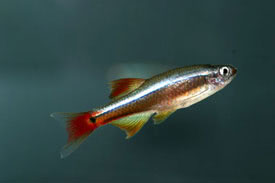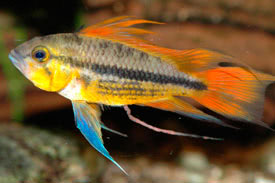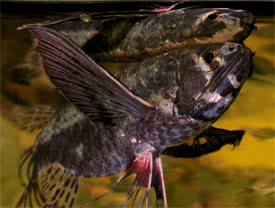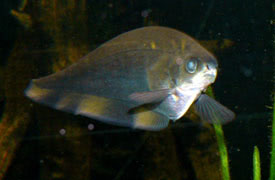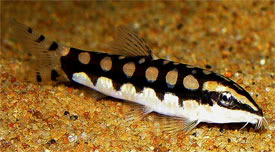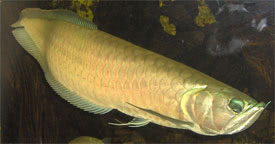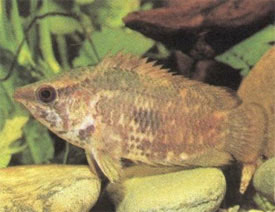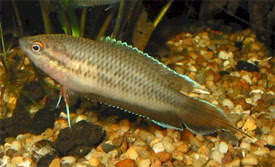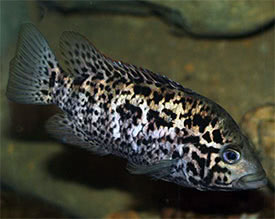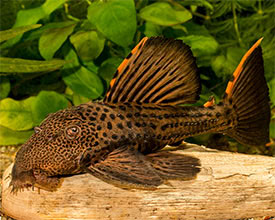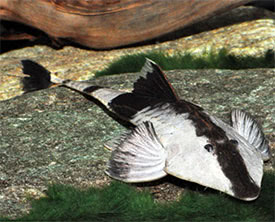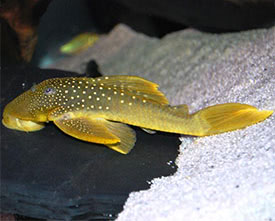
 Magyarul / Hungarian
Magyarul / Hungarian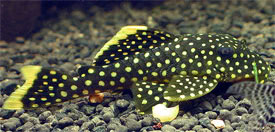
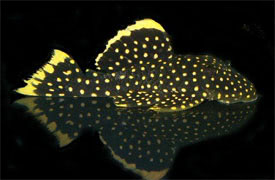
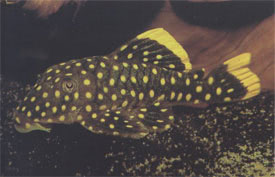
- Scientific name: Baryancistrus xanthellus
- Synonyms: Baryancistrus sp. L-18, L-18 catfish, L-81 catfish, L-85 catfish, L-177 catfish
- Common name: Gold nugget pleco
- Group: Catfishes
- Habitat: South America; Brazil
- Size: 30-35 cm
- Biotope: Inhabits under flat rocks at the bottom of shallow rapid stretches of Xingu River.
- Social behavior: Territorial and quarrelsome to other bottom dwellers and vicious to other gold nuggets. Adult fish can kill each other in a small aquarium. Otherwise they do well in a community environment and will be peaceful towards mid or top-dwelling fish.
- Diet: Omnivorous; In nature they are algae grazers, but they also eat small insect larvae and crustaceans or even dead fish. In aquaria they eat live and frozen foods and also vegetable matter, such as cucumber and courgette.
- Breeding: Breeding is possible, but very rare.
- Tank: Minimum 300 litres
- Population: 2 fish for 650 litres
- Decoration: They need clear water with a noticeable current. They need many hiding places in bogwood and rocks and plenty of caves.
- Temperature: 25-30 °C
- pH: 6,4-7,6
- Hardness: 3-15 NK°
- Lifespan: 15 years
Description: This Baryancistrus was given it's proper described name, Baryancistrus xanthellus, in 2011. This species is named after its bright yellow spots (Greek xanthellus=yellow). This species is known in the aquarium trade as the Gold nugget pleco, and has been given many L-numbers. The name "Gold Nugget Pleco" is short for "Gold Nugget Plecostomus." It is a suckermouth catfish which was first captured and exported to Great Britain in 1981. Their body is dark red-brown in color with medium-sized round yellow spots on it. The fins have the same color pattern. The dorsal and caudal fins are edged in a thick yellow band. This color pattern change as the fish gets older: when the fish grow, these bands become more narrow and the spots on the body become smaller. Ont he adult fish the spots are very small and the yellow bands become a small dot or even disappear on the tips of these fins. A generally nocturnal Pleco. The main collecting season of the beautiful catfish starts around end of may and lasts until the end of september. It is good to know that the Xingu river has relatively warm water the whole year through. Unfortunately a large percentage of imported fish die within the first month or so in captivity.
It is hard to tell the differences between sexes, unless the fish are at full breeding size. Males have a flatter and slightly wider heads, while females have a more rounded forehead and they are plumper during spawning. Odontodal growth on pectoral and cheeks is greater on males than females. Before breeding give them a diet of blended meat, fish and vegetables. The breeding tank should be large enough with lots of current and a temperature of 30°C. Cave spawners. Apparently, the use of a powerhead to direct a strong flow of water towards the breeding site is required, and the fish lay their eggs in a cave. The free swimming fry should be fed with the same food as their parents. Baryancistrus xanthellus tends to grow extremely slowly in captivity.


















